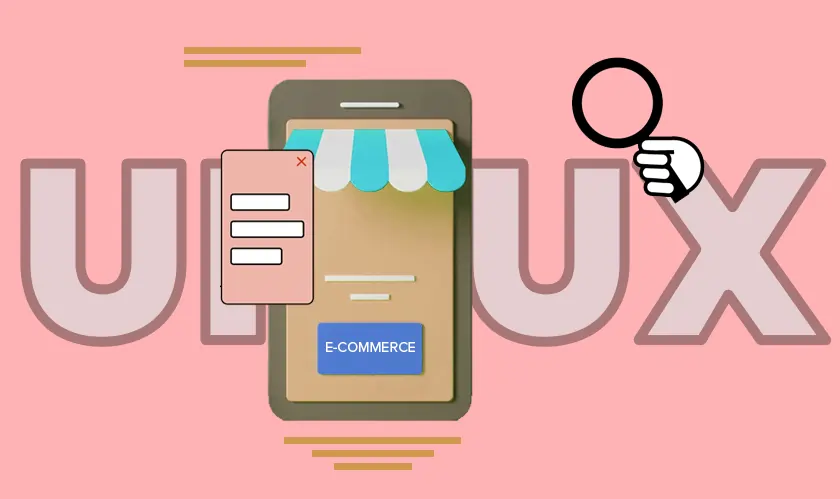Home Industry Digital marketing 5 Technologies to Integrate Yo...
Digital Marketing

CIO Bulletin
13 June, 2024
Having an e-commerce site is a great way for your business to establish a strong online presence. However, if you aren’t maximizing your website’s capabilities, it could be difficult for your business to thrive in the e-commerce industry. You want to provide your target audience with a seamless online shopping experience to boost customer satisfaction, increase conversion rates, and enhance your brand’s reputation. Fortunately, optimizing your website’s user interface (UI) and user experience (UX) can significantly improve your website’s performance and reception.
UI encompasses a website’s visual elements and interactive components, including layout, color scheme, typography, buttons, and navigation menus. On the other hand, UX focuses on the user’s overall experience while navigating the website. It touches upon various factors, including ease of use, efficiency, accessibility, and satisfaction. Both of these factors play pivotal roles in shaping how people use and perceive your online store.
Having good UI and UX is, simply put, important for attracting customers and keeping them engaged to encourage repeat visits. This article explores the different technologies you can integrate into your e-commerce website to enhance its UI and UX.
Responsive Web Design
Responsive web design ensures that your e-commerce site is accessible to users on any device, whether they’re using a desktop computer or a smartphone. It provides users with an optimal viewing experience across platforms, resulting in a consistent user experience and thus higher user satisfaction and engagement. A responsive web design also makes your e-commerce site mobile-friendly, which many search engines find favorable. This can then boost your site’s visibility and traffic.
One of the things you can do is to adopt a mobile-first design approach to ensure a seamless experience on smaller screens. You can also optimize images and multimedia content for fast loading times on desktop and mobile devices. Finally, test your website across various devices and screen sizes to identify and address any layout or functionality issues.
Online Payment Gateway
To provide customers with a seamless online shopping experience, you need to integrate a payment gateway into your e-commerce website. This technology facilitates the secure processing of electronic payments in online stores, acting as a bridge between your website and the payment processor like a bank or credit card company. Integrating a suitable payment gateway simplifies your business’s online checkout process, which can reduce friction and cart abandonment rates.
When selecting an online payment gateway, look for one that’s easy to use and incorporate into your website. This way, you won’t have any compatibility or implementation issues. You should also opt for a payment gateway that’s optimized for mobile devices to ensure a seamless payment experience across desktop and mobile platforms. One of the best payment gateway Philippines’ e-commerce entrepreneurs use is Maya Checkout. This product by Maya Business is known for its user-friendly interface that can be accessed on both desktop and mobile devices. It also enables entrepreneurs to accept a variety of payment methods, including credit/debit cards, e-wallets, and other emerging digital payment solutions. This enables online businesses to cater to diverse customer preferences and improve their conversion rates.
Single Page Application
A single page application (SPA) is a web application or website that dynamically updates content without requiring the entire page to reload. SPAs use AJAX and JavaScript frameworks to fetch and render data asynchronously, resulting in faster and more fluid user interactions. With a smoother browsing experience, you can ensure that your users won’t have to wait long when transitioning between web pages, resulting in improved web browsing experience.
Microinteractions
Microinteractions are subtle animations, visual cues, or feedback mechanisms that occur in response to user actions on a website or application. They enhance the user experience by providing instant feedback, guiding users through the interface by drawing attention to interactive elements or indicating the next steps in a process. This makes the website interface more engaging and easier to navigate, which helps reduce uncertainty and frustration. Moreover, well-designed microinteractions add personality and delight to users, making the web browsing experience more enjoyable and memorable. Examples of microinteractions include button animations, hover effects, progress indicators, and notification alerts.
The trick to making the most of microinteractions is to keep them subtle. Ensure that these visual cues are unobtrusive so as not to overwhelm or distract users from the main content. As such, it’s recommended to use animations sparingly and purposefully to enhance key interactions and emphasize important elements. Also, ensure that microinteractions are consistent across your website to maintain a cohesive user experience.
Personalization Engine
A personalization engine utilizes machine learning algorithms and user data to deliver personalized experiences and recommendations based on user preferences, behavior, and past interactions. They analyze details such as browsing history, purchase history, and demographics to tailor content, product recommendations, and marketing messages to individual users. Providing a personalized website experience creates a sense of exclusivity and relevance for users, increasing their likelihood of interacting with your website and returning for future visits. Moreover, personalized engines allow you to anticipate your users’ needs and preferences, which enhances the overall user experience and leads to higher levels of customer satisfaction and loyalty.
With personalization engines, however, you have to balance personalization with privacy considerations to retain customer trust. Be transparent about your data collection practices and give users control over their privacy settings and preferences.
As technology continues to evolve and consumer expectations along with it, staying ahead of the curve and continuously optimizing your e-commerce site’s UI and UX will be critical to maintaining a competitive edge in the industry. By investing in the right technologies, you can position your business for long-term success and growth in the digital marketplace.







